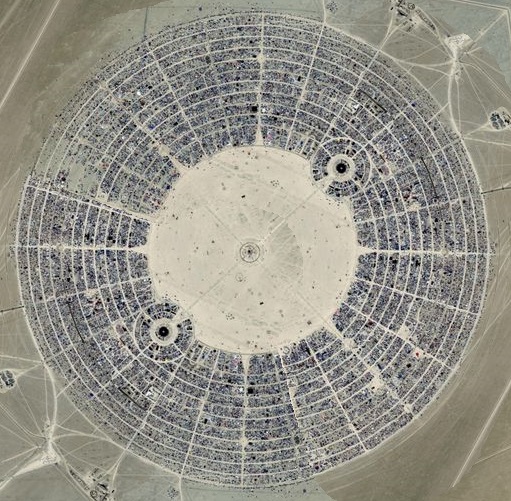You might want to check out Ebenezer Howard and the Garden City movement, it might not be the best selling point for circular city planning though, no garden cities evolved into cities you'd recognize the name of. However, the main problem with Howard's idea, might not be the circular structure in itself but rather the anti-urban approach.
The popular wisdom (at this point in history) is that the main benefit of the city is density, It's a people and talent aggregator. People tended to meet in unexpected ways when they all were cramped in inside the city walls which lead to ideas meeting money (and so forth, you can check out Jane Jacobs for a bit more on urbanist ideas).
The exact shape of houses and public space is not extremely important, but there are some factors that you want to keep in mind in designing the city.
1) DENSITY: Stores, restaurants and other businesses all require a certain amount of potential customers to be viable. (This varies of course and factors such as customer segment, employee wage levels and rent levels at the location will guide what is sustainable at any given location.) This means you want not only people living close by but also the next point on the list.
2) COMMUNICATIONS: Urbanist (although not anti-urbanists or modernists) agree that the best locations for businesses are close to communication hubs and along thoroughfares. (Such as the main street.) You want fairly straight streets which cross through more than one neighbourhood. People who pass along from one place to another are the life blood of the city.
3) SECONDARY LOCATIONS: You can't just have major thoroughfares, those locations will quickly be filled with the business owners who can pay the premium prices (like real estate agents in major Swedish cities) and that will stifle creativity in your city. You want smaller streets and alleyways which connects the major streets. The spoked wheel city design suggested by James is a good start but also consider how the Burning Man site is laid out in Len's post. The grid pattern might not be the most practical use of space if all houses and quarters need to be circular, but you might want to give it a thought. How are people flowing in your city? Where do they go? How can their way be effectivized? The shortest path for the most people will be where the prime locations are. Radiating off from the prime locations will be the secondary locations.
The reason I bring this up is that we can see how cities who grew organically and gave space for these factors are the most successful cities. Cities planned according to modernist ideals about separation of function and city plans which looked great on a map (most famously Brasilia) tend to be very dependent on political power to stay afloat.
Which of course is another idea. A ceremonial political or religious city can be designed along totally different ideals. Maybe there is no need for commerce as we recognize it, the goods needed to sustain the perfect city is brought in and distributed to the elites from the outside. The only thing that matters inside is your social standing which is greater the closer you are to the center of the circle where the seat of power resides.











